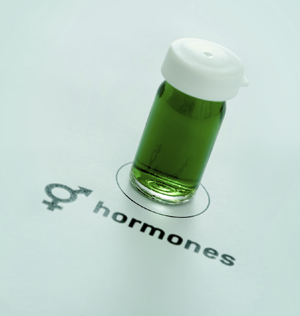
According to BreastCancer.org, one in every eight women will develop invasive breast cancer in her lifetime, a risk that increases as we age.
by Dr. Ann Lovick —
If there is one thing women fear, it is breast cancer. Perhaps it is the fact that breasts are such a feminine attribute, strongly associated with attractiveness and fertility, or that women associate breast cancer with a loss of sexuality and even a loss of self. Some women are afraid of the various treatment modalities, such as surgery, chemotherapy and radiation. These treatments may cause pain, sickness, physical changes and hair loss. Many patients have stated that they feel the treatment is worse than the disease.
Sadly, everyone knows someone who has had breast cancer, whether she is a friend, family member or coworker. According to BreastCancer.org, one in every eight women will develop invasive breast cancer in her lifetime, a risk that increases as we age.
Many women do not go for regular screenings because they do not want to hear bad news. The idea is that “no news is good news.” But nothing could be further from the truth. Breast cancer, like most cancers, is completely treatable if caught early. Regular screening and follow-up with your doctor is extremely important. But there is more that you can do to prevent breast cancer.
Research shows that the way our bodies break down estrogen can affect our risk of breast cancer. Estrogen is metabolized in the liver. The metabolites, or byproducts of metabolism, are a key to developing, or not developing, breast cancer.
There are six metabolites that we look at — four metabolites are considered bad and only two are considered good. Although all six metabolites may be present, it is the ratios of these metabolites to one another that are important.
One of the most reviewed ratios is commonly called the 2:16 ratio. If this ratio is less than 2, meaning that you have too much of the bad estrogen (16) and not enough of the good estrogen (2), studies show that you are at an increased risk of breast cancer, as well as other estrogen-driven cancers such as cervical cancer and ovarian cancer.
How can you find out how your liver is breaking down estrogen? A simple morning urine sample can be sent to a lab for evaluation to determine your estrogen metabolism ratios. Once your doctor has that information, she can assess your risk and take steps to mitigate it. This test also can be used to monitor current breast cancer treatment plans, as well as to monitor hormone replacement therapy. It is a great test to determine osteoporosis risk as well.
What can affect the balance of this ratio? Diet and exercise have a strong impact on the 2:16 ratio. Adding flax seeds, cruciferous vegetables and soy products to your diet can increase this ratio. Likewise, obesity and alcohol consumption can have a negative impact.
Kidney function and fluid consumption also can affect this ratio, so I recommend a complete blood count (CBC) and comprehensive metabolic panel (CMP), along with the estrogen metabolism test. Your doctor will be able to interpret your laboratory tests, determine how you metabolize estrogen and create a plan to shift your metabolism to a different pathway, if necessary.
Ann Lovick, N.M.D, is in practice at Integrative Health in Scottsdale, Ariz., along with Drs. Alan Christianson and Phil Wazny. 480-657-0003 or www.integrativehealthcare.com.
Reprinted from AzNetNews, Volume 30, Number 5, Oct/Nov 2011.





February 23, 2012
Breast health, Estrogen, Health, Health Concerns, Women